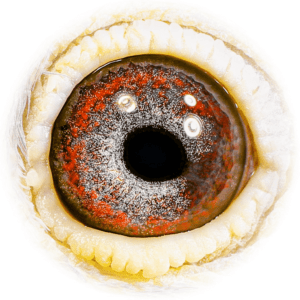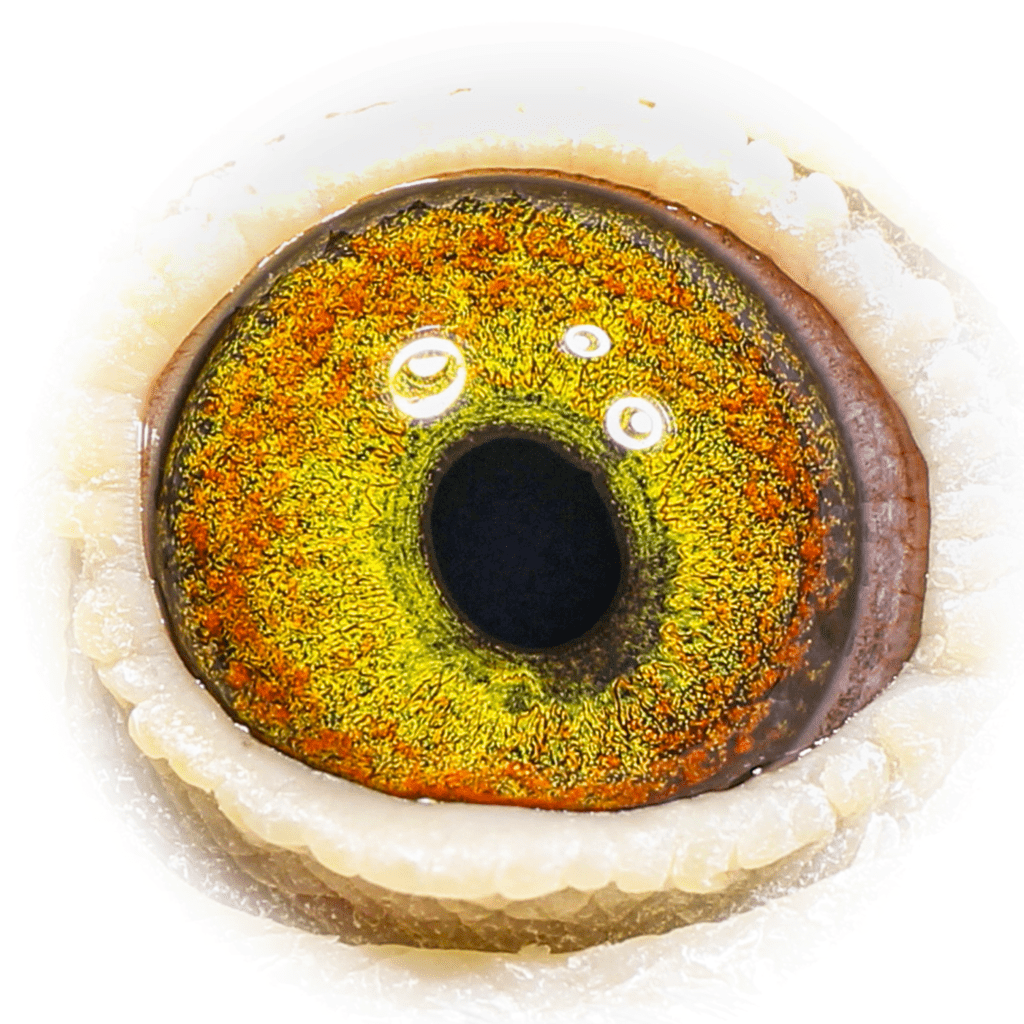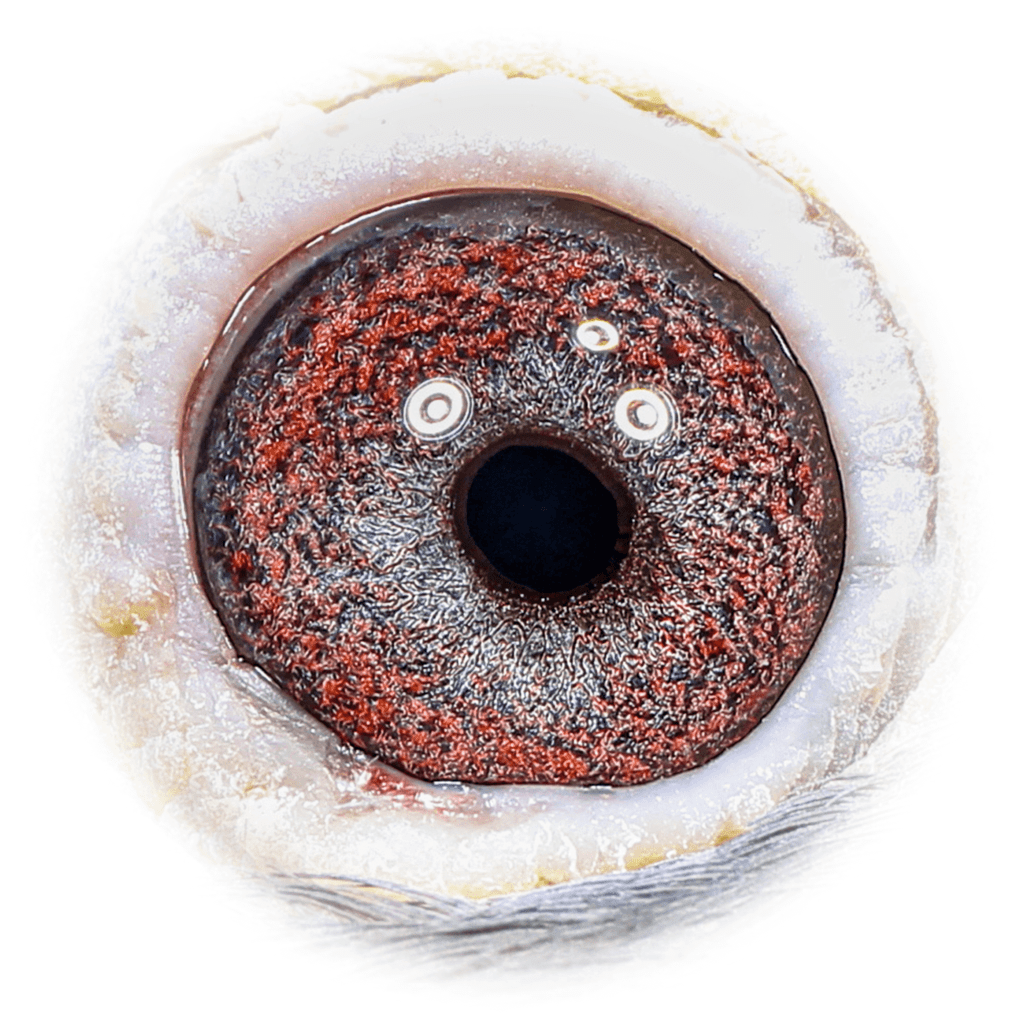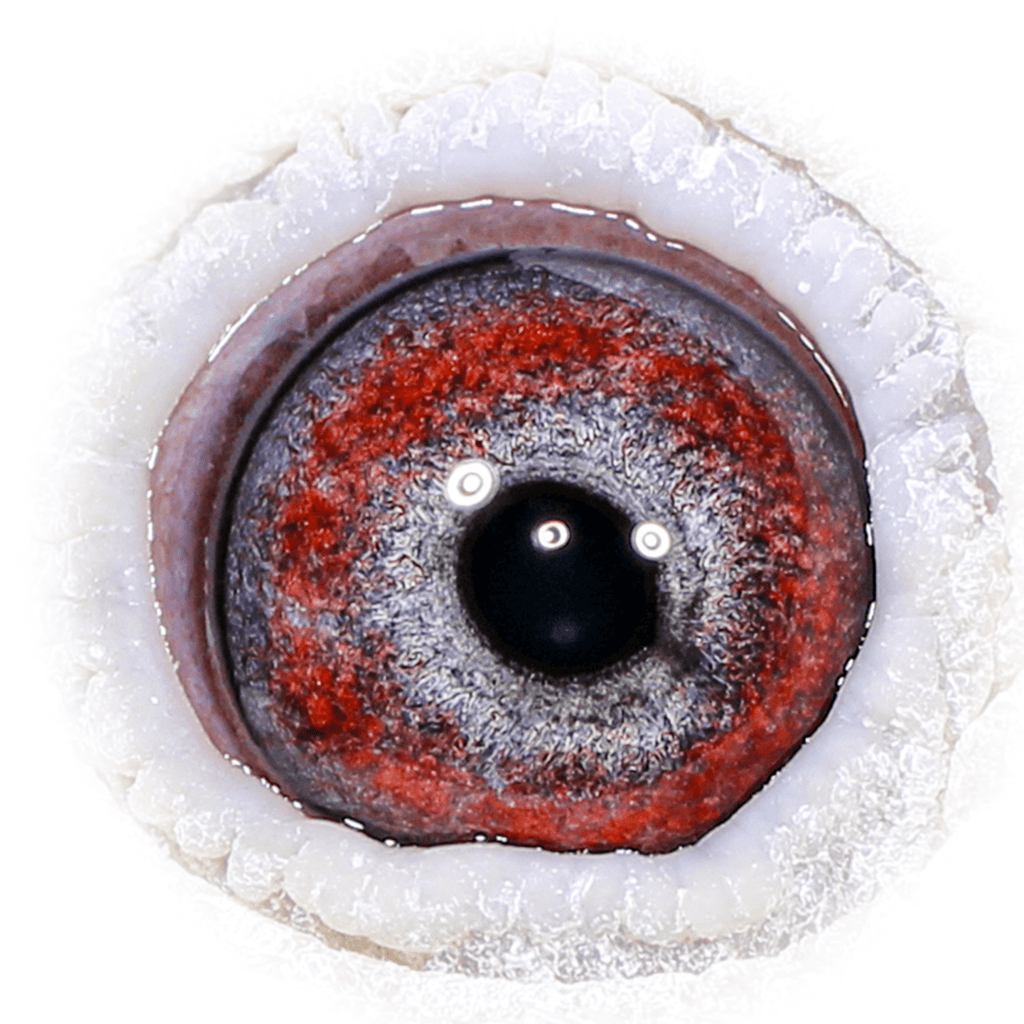Introduction to Eye Sign in Racing Pigeons
the best youtube video on the below
In the domain of racing pigeons, the term “eye sign” refers to specific characteristics observed within the eyes of these avian athletes. The eye sign is a concept embraced by pigeon fanciers to gauge a pigeon’s potential for racing and breeding based on various attributes of its eyes. This practice involves scrutinizing features such as the richness of the iris, the size and structure of the eye circle (often referred to as the circle of correlation), and other nuanced details within the eye’s anatomy.
The anatomy of a pigeon’s eye reveals several distinct components that are scrutinized by experts. The iris, known for its vibrant pigmentation, and the granular texture, which is believed to indicate vigor and health, are areas of focus. Additionally, the circle of correlation delineates a developmental quality within the pigeon’s genetic makeup. Experts observe these features meticulously, as they theorize that they correlate with the bird’s skill in navigation, physical endurance, and overall vitality.
The practice of using eye sign in evaluating pigeons dates back many decades. Pigeon racing, an activity that surged in popularity in the early 20th century, saw enthusiastic pigeon fanciers developing various methods to assess and select superior birds. Among these methods, the analysis of eye sign gained prominence due to its non-invasive nature and perceived efficacy. Over the years, numerous fanciers have sworn by eye sign, using it as a primary tool in their breeding programs to enhance the quality and performance of their racing pigeons.
In this intricate world, every detail counts. The usage of eye sign remains a topic of fascination and debate, where tradition meets scientific curiosity. Its ongoing relevance underscores the careful balance pigeon enthusiasts maintain between empirical observation and experiential wisdom in the pursuit of breeding elite racing pigeons.
The Science Behind Eye Sign and Genetics

The study of racing pigeons’ eyesign bridges the gap between traditional breeding practices and modern genetic science, offering pigeon breeders tangible markers to evaluate genetic health. Eye signs—the physical traits observed within a racing pigeon’s eyes—are believed to serve as indicators of underlying genetics, influencing both performance and breeding potential.
One of the foremost aspects of eye sign analysis is pupil size. Scientific investigation suggests that a well-defined, responsive pupil can indicate a strong and healthy nervous system, an attribute crucial for high-performing racing pigeons. Pupil size may also be linked to vigor and vitality, which are indispensable traits for endurance flying.
Eye color, another significant marker, offers insights into the genetic make-up of a racing pigeon. Rich and vivid eye colors are often perceived as signs of good health and robust genetic lines. For instance, a deep orange or red iris is sometimes associated with higher levels of certain pigments that could translate into better overall health and potentially superior racing capabilities.
The texture of the eye ring—specifically whether it is smooth or coarse—can provide additional information about a pigeon’s genetic disposition. A smooth, well-formed eye ring is frequently viewed as an indicator of genetic purity and strength, suggesting that the pigeon may possess desirable traits for breeding. Conversely, a rough or asymmetrical eye ring might hint at genetic anomalies or weaknesses.
Scientific research supports these observations. Studies have highlighted the correlation between specific eye signs and pigeons’ racing performance. Experts in avian genetics have posited that the eye sign’s visibility offers breeders a non-invasive method to assess genetic merit effectively. While further empirical evidence is necessary, existing research underpins the practical use of eye sign as a valuable tool for breeders.
By understanding these genetic markers, breeders can make more informed decisions, optimizing their breeding strategies to develop pigeons with enhanced racing capabilities. The practice of analyzing racing pigeons’ eyesign continues to be validated both through anecdotal evidence from experienced breeders and ongoing scientific research.
Types of Eye Signs and What They Indicate

Eye signs in racing pigeons are critical indicators of a bird’s potential as a competitive racer. These signs can be broadly classified into several categories, each providing unique insights into the pigeon’s attributes. Among these, depth of field, iris coloration, and pigment intensity stand out as key evaluative criteria.
Depth of Field: This eye sign refers to the dimensional depth visible in the pigeon’s eye. A well-defined depth of field is often associated with superior spatial awareness and long-distance flight capability. Pigeons exhibiting a pronounced depth of field generally possess excellent orientation skills and are more apt at navigating over long distances. This attribute is crucial for endurance in races spanning vast terrains.
Iris Coloration: The color of the iris can also provide significant clues about a pigeon’s health and vigor. Diverse hues ranging from pale yellow to deep orange are observed in racing pigeons. A vibrant and luminous iris coloration is typically indicative of robust health and vitality. In contrast, a dull or muddy iris might suggest underlying health concerns or lower levels of energy, which could impede the pigeon’s racing performance.
Pigment Intensity: The richness of pigmentation within the eye is another critical factor. High pigment intensity is often correlated with a pigeon’s stamina and resilience. Dark, saturated pigments can be signs of a strong genetic lineage and overall vitality. Such pigmentation suggests that the pigeon is likely to possess the energy reserves needed for the exhaustive demands of competitive racing. Conversely, lighter pigments might denote fragility or reduced stamina.
These eye signs are invaluable tools for breeders aiming to enhance their racing pigeon stock. By carefully evaluating the depth of field, iris coloration, and pigment intensity, breeders can make informed decisions, prioritizing birds that exhibit the optimal characteristics for stamina, speed, and overall health. High-quality images or diagrams can aid in the precise identification of these eye signs, providing a visual reference that ensures accurate assessment and selection of top-tier racing pigeons.
Expert Techniques for Evaluating Eye Sign

Evaluating eye sign in racing pigeons requires a meticulous approach, as the intricacies can greatly influence breeding decisions. The first step is proper handling of the pigeon to ensure both the bird and the observer remain calm and composed. Gently cradle the pigeon in one hand, using the other to carefully expose the eye. This ensures optimal visibility without causing distress.
Using magnifying tools, such as a jeweler’s loupe or a specialized eye sign scope, is crucial for a detailed inspection. These tools enhance the visibility of subtle features and fine details that are not apparent to the naked eye. A 10x magnification is generally recommended by experts, as it provides a balanced level of detail.
Lighting conditions play a pivotal role in the accurate evaluation of eye signs. Natural daylight is often preferred due to its ability to reveal true colors and contrasts. If natural light is unavailable, utilizing a high-quality, daylight-equivalent lamp can be an effective alternative. Position the light source to minimize shadows but avoid direct glare, which can obscure important details.
Seasoned breeders have developed an eye for specific characteristics that indicate superior racing potential. Key features to examine include the depth and vibrancy of the iris coloration, the clarity and definition of the cornea, and the structure of the sign ring. A well-defined and multifaceted iris with vivid pigmentation is often indicative of a robust and capable pigeon. Additionally, the presence of a pronounced sign ring, which should ideally display a spectral array of colors, is highly desirable.
Common mistakes during evaluation include poor lighting, inadequate magnification, and mishandling of the bird, all of which can lead to inaccurate assessments. Experts advise taking the time to acclimate to the tools and techniques, ensuring a thorough and precise evaluation. Documenting findings with photographs or notes can also aid in tracking a pigeon’s eye sign development over time, further refining the breeder’s selection process.
Case Studies: Successful Breeding Through Eye Sign Evaluation
The application of eye sign evaluation in breeding racing pigeons has garnered significant attention due to its impact on the success and performance of these birds. A prime example of this approach is the renowned champion racing pigeon, “Blue Comet,” bred by the esteemed breeder John Harlow. Blue Comet’s impressive eye sign characterized by vivid coloration and pronounced depth was one of the key indicators that guided Harlow in selecting this bird for breeding. This pigeon went on to secure multiple first-place finishes in various long-distance races, illustrating the potential of utilizing eye sign as a reliable selection tool.
Another noteworthy case is that of “Silver Arrow,” bred by Emily Cross, a celebrated name in pigeon racing circles. Silver Arrow’s remarkable eye characteristics, featuring a rich-colored iris with a well-defined circle of correlation, caught Cross’s attention early in its development. Under her meticulous care and selective breeding practices, emphasizing these eye traits, Silver Arrow achieved extraordinary feats, including top positions in national competitions and setting new speed records. Cross attests that the foundation of Silver Arrow’s success lies significantly in the discerning eye sign-based selection process.
Furthermore, testimonials from other reputable breeders underline the efficacy of eye sign evaluation. Thomas Berg, a veteran breeder known for his scientific approach, shares insights from his decades-long experience. Berg recounts several instances where pigeons exhibiting superior eye signs—brilliant pigmentations and structural clarity—have consistently outperformed their peers. His breeding loft, predominantly curated through eye sign evaluation, has produced numerous award-winning pigeons, affirming the strategy’s merit.
These real-world examples and expert testimonials underline the critical role of eye sign evaluation in breeding successful racing pigeons. Both empirical evidence and professional endorsements underscore the notion that paying close attention to eye characteristics can be a determining factor in the achievement of remarkable racing outcomes. By integrating eye sign analysis into breeding protocols, discerning breeders can enhance their chances of cultivating a lineage of top-performing racing pigeons.
Advantages and Limitations of Relying on Eye Sign
When selecting breeding racing pigeons, eye sign can offer a variety of benefits that are advantageous to breeders. Foremost, the study of a racing pigeon’s eyesign can provide insights into health indicators and vitality. An eye exhibiting vibrant coloration and clarity often correlates with a stronger, more fit pigeon, which is essential for enduring rigorous races. Furthermore, eye sign can reveal predispositions toward particular racing abilities, supporting the selection of birds apt for speed or endurance depending on the desired outcome of the races.
Additionally, eye sign can aid in categorizing pigeons based on their reproductive prospects. Experienced breeders have found correlations between certain eye characteristics and successful breeding patterns, which can be a pivotal factor in long-term breeding plans. This visual assessment tool allows breeders to make informed decisions quickly, aiding in the optimization of breeding strategies and enhancing the quality of the racing pigeon lineage.
Despite these notable strengths, there are inherent limitations associated with relying solely on eye sign for selecting breeding racing pigeons. One significant drawback is the element of subjectivity involved in eye sign evaluation. Different breeders might interpret the same eye characteristics differently, leading to inconsistent selection criteria. Thus, the potential for human error cannot be disregarded, and it’s crucial for breeders to develop a refined skill in eye sign assessment.
Moreover, a profound reliance on eye sign could overshadow other critical factors such as physical condition, pedigree, and actual racing performance. A racing pigeon with perfect eye sign but subpar physical attributes or an unsatisfactory racing record should not be prioritized simply based on eye characteristics. Comprehensive selection should integrate multiple factors, ensuring a well-rounded assessment that maximizes the chances of breeding successful racers.
In conclusion, while eye sign offers valuable insights, it is best used as a complementary tool rather than the sole criterion for selecting breeding racing pigeons. Harmonizing eye sign evaluation with thorough assessments of physical fitness, pedigree, and past performance will lead to more reliable and successful breeding outcomes. This balanced approach ensures that breeders bolster their chances of cultivating racing pigeons that excel both on and off the racecourse.
Integrating Eye Sign Assessment with Modern Breeding Technologies
As the domain of racing pigeon breeding evolves, the integration of traditional eye sign assessment with modern breeding technologies presents a promising pathway to enhance breeding success. Eye sign, a time-honored method, continues to hold substantial significance in evaluating the potential of racing pigeons. When harmonized with contemporary breeding methodologies, it creates a more comprehensive approach to selecting prime breeders.
Genetic testing emerges as a pivotal modern tool. By examining a pigeon’s genetic makeup, breeders can detect specific genes linked to superior racing performances and health conditions. These genetic insights, when combined with traditional eye sign evaluation, allow for a dual-faceted approach. While the eye sign offers tangible indications of a pigeon’s vitality and ability, genetic testing adds a layer of certainty, ensuring the selection is grounded in both phenotype and genotype considerations.
Biometric analysis further augments this integrative strategy. By employing biometric tools, breeders can meticulously measure physical characteristics such as wing span, muscle density, and overall body conformation. The data retrieved from these assessments can be cross-referenced with eye sign observations. Pigeons exhibiting favorable biometric traits coupled with optimal eye signs are more likely to demonstrate peak performance, hence ensuring a meticulous selection process.
Artificial intelligence (AI) and machine learning represent the frontier of modern breeding technologies. Advanced AI algorithms can analyze vast datasets, identifying patterns and correlations among eye sign features, genetic information, and performance metrics. This deeper level of analysis provides predictive insights, guiding breeders in making data-driven decisions. For instance, AI can simulate various breeding scenarios, predicting the probable outcomes based on the combined data from eye sign and genetic testing, thereby mitigating risks and enhancing breeding outcomes.
Current innovations in the field underscore the synergy between traditional and modern approaches. Implementing technologies such as genetic testing, biometric analysis, and AI-driven data insights alongside classical eye sign assessment, equips breeders with a robust framework. This integrative methodology not only respects the age-old wisdom but also leverages cutting-edge advancements to foster the development of elite racing pigeons.
Conclusion and Future Prospects of Eye Sign in Pigeon Breeding
Eye sign remains an invaluable asset in the meticulous selection of breeding racing pigeons. This methodology, steeped in tradition, presents breeders with unique insights into the potential of their birds. Understanding the intricacies of eye sign enables breeders to make informed decisions that could enhance the performance of their racing pigeons, thereby gaining a competitive edge. Through detailed observations of the iris structure, pupil size, and overall eye vitality, breeders can discern attributes linked to vitality, endurance, and homing ability, all crucial traits for successful racing pigeons.
The current emphasis on eye sign in pigeon breeding may well evolve in the coming years as our understanding of avian biology deepens. Traditional techniques, while effective, may benefit from integration with emerging technological advancements. For instance, digital imaging software and machine learning algorithms hold promise for providing more precise and scalable analysis of eye features. This fusion of traditional knowledge with innovative methodologies could unearth new parameters previously undetected by the human eye alone.
Future trends in the field of racing pigeons eyesign may also see collaborative efforts between geneticists and ornithologists. Genomic studies could potentially identify genetic markers associated with eye traits indicative of superior racing performance. Such interdisciplinary approaches could revolutionize pigeon breeding, making the selection process more efficient and scientifically grounded.
Encouraging breeders to remain adaptable and open to integrating new insights with traditional practices is paramount. A forward-thinking mindset will enable the adoption of new technologies and research findings, fostering continuous improvement in the quality and capability of racing pigeons. Ultimately, combining the wisdom of eye sign tradition with cutting-edge innovations will ensure that breeders harness the full potential of their birds, securing a bright future for the sport.

